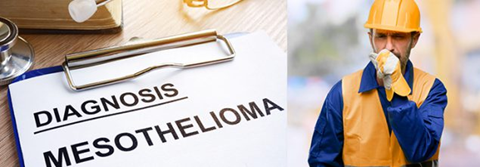The National Mesothelioma Virtual Bank: Advancing Research and Treatment
Posted on by
The National Mesothelioma Virtual Bank (NMVB) is a virtual biospecimen tissue biorepository that was developed in 2006 at the University of Pittsburgh in partnership with a network of sites in the mid-Atlantic region. It was created to assist researchers and healthcare professionals better understand and treat malignant mesothelioma. Malignant mesothelioma is a rare, aggressive, and deadly type of cancer that is often associated with exposure to asbestos. While there are treatment options, many patients will succumb to the disease, with a 5-year relative survival rate of 12%, per the American Cancer Society and the Surveillance, Epidemiology, and End Results Program. The NMVB is funded by a grant from the National Institute for Occupational Safety and Health, Office of Extramural Programs.
The NMVB is the largest and most accessible resource for biospecimens donated by mesothelioma patients in the United States. Mesothelioma research conducted with samples from NMVB has led to thousands of citations in prestigious journals including Nature Genetics, Cell, and Cancer Discovery.
Current NMVB Collaboration Sites
University of Pittsburgh DBMI
University of Maryland
New York University
Roswell Park Cancer Institute
University of Pennsylvania
Baylor College of Medicine
Temple University
Fox Chase Cancer Center
How the NMVB Works
The NMVB collaborates with eight academic health centers across the United States. With the patient’s consent, the NMVB collects and stores de-identified tissue and blood samples from patients with mesothelioma, as well as from patients who have been exposed to asbestos but have not developed the disease. The samples are processed and stored in a biorepository along with medical and demographic data about the patients.
Any interested researcher can request samples from the NMVB via the query tool to study the genetic and molecular characteristics of mesothelioma, as well as to explore potential new treatments and diagnostic tools. The virtual bank also allows for collaboration between researchers from different institutions and disciplines, helping to advance knowledge and understanding of this complex disease.
Benefits of the NMVB
The NMVB provides several benefits for both researchers and patients with mesothelioma. These include:
- Improved understanding of the disease: The NMVB allows researchers to study many patient samples, which can help to identify commonalities and differences in the disease. This information can lead to new insights into how mesothelioma develops and progresses and may help to identify new treatment options.
- Faster development of new treatments: By providing researchers with a centralized biorepository of data and samples, the NMVB can help speed up the development of new treatments for mesothelioma. Researchers can use the tissue bank to test potential new therapies and to identify patients who may be good candidates for clinical trials.
- Better patient care: The NMVB provides a way for healthcare professionals to access important medical and demographic information about patients with mesothelioma. This information can be used to develop more effective treatment plans and to improve the overall care of patients with this disease.
The NMVB is an important resource for advancing research and treatment of mesothelioma. By providing a centralized repository of data and samples, the NMVB allows researchers to study the disease in a more efficient and collaborative manner. This can lead to new insights into the disease, as well as to the development of new treatments and diagnostic tools. Ultimately, the NMVB has the potential to improve the lives of patients with mesothelioma and their families.
Investigators can search the NMVB study database to identify and request data and biospecimens via the NMVB website. This online data access application provides convenient query access to the data repository.
If you or a loved one have mesothelioma or have been exposed to asbestos and would like to contribute to the data bank, contact Michael Becich, MD PhD at becich@pitt.edu.
Chris Garner and Susan Copelli are the Project Managers of the National Mesothelioma Virtual Bank at the University of Pittsburgh School of Medicine.
Posted on by

